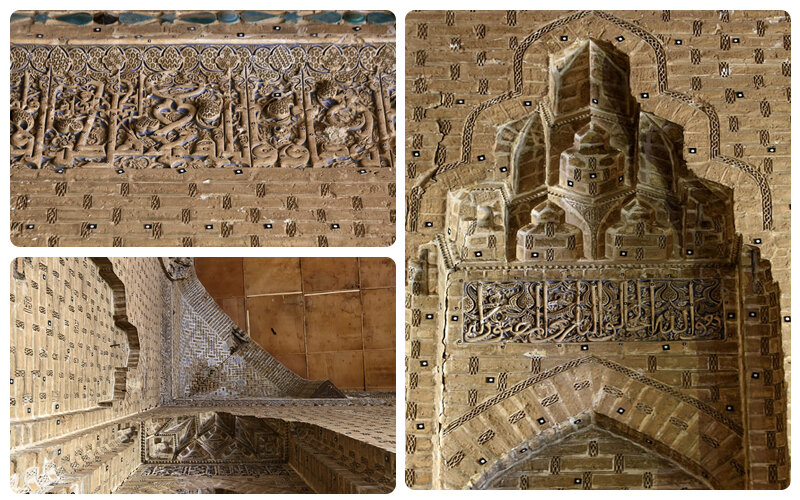Beyond Bricks and Stucco: Heydariyyeh Mosque and its enduring legacy
Heydariyyeh Mosque stands as a splendid testament to the Seljuk period, likely dating back to the late 12th or early 13th century. Located in the Bolaghi district of Qazvin, north-central Iran, this magnificent structure exudes an aura of tranquility, drawing visitors into its sacred space.

Located in the Bolaghi district of Qazvin, north-central Iran, this magnificent structure exudes an aura of tranquility, drawing visitors into its sacred space.
Constructed predominantly of brick, the mosque is renowned for its exquisite brickwork facades and intricate stucco carvings. The interior boasts early glazed tiles and elaborate decorative elements, including arched niches adorned with inscribed stucco and muqarnas brick motifs. Noteworthy features include a frieze of Kufic plaster inscriptions below the dome arches.
The mihrab, located on the southern wall, showcases finely carved stucco against a backdrop of painted blue, a testament to the artistry of Iranian stucco craftsmanship. Although partially damaged, it remains a stunning example of traditional stucco mihrabs, adorned with stylized high-relief motifs such as pomegranates and pine cones.
The mosque was integrated into a madrasa during the 19th-century Qajar dynasty. However, much of the madrasa was later dismantled in 1955 to make room for an elementary school, leaving the mosque as a solitary remnant of its architectural heritage.
As mentioned by Archnet, the architectural style of the mosque, with its single domed chamber prayer hall, bears resemblance to the grandeur of the Friday Mosque of Qazvin. This similarity suggests a common architectural lineage, possibly indicating shared craftsmanship or renovation efforts under the same master builder.
Arthur Pope's documentation of Heydariyyeh Mosque highlights its square plan, measuring 14 by 14 meters externally and 10 by 10 meters internally. Entry into the mosque is through a northern entrance iwan, added later to the original Seljuk structure. Though the original brick dome is no longer extant, a recent temporary roof safeguards the interior space.
Beyond its architectural marvels, Qazvin enchants visitors with its rich history. Once a capital of the Persian Empire under the Safavids, the city now boasts a range of restored landmarks like the Sa’d-al Saltaneh caravanserai, offering a glimpse into Iran's vibrant past. From exploring historical churches and Armenian neighborhoods to embarking on excursions to the castle of the Assassins and trekking through the Alamut Valley, Qazvin promises unforgettable adventures for travelers seeking to delve into Iran's diverse heritage and natural beauty.
Visiting historical mosques in Iran offers travelers a profound glimpse into the country's rich cultural, architectural, and religious heritage. These mosques stand not only as places of worship but also as living testaments to Iran's illustrious past, spanning centuries of artistic and architectural innovation.
